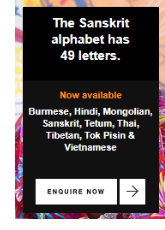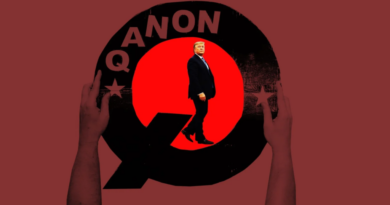What governments can do about QAnon believers
Policymakers and community leaders will have to engage with the ideology underlying conspiracy theories and make believers feel safe if they hope to contain their volatile behaviour, James Mortensen writes.
While 2021 hasn’t brought the end of the pandemic, it seemed to bring respite from another threat, ‘QAnon’. QAnon believers allege that a conspiracy of satanic, cannibalistic paedophiles run a global child sex trafficking ring and worked to create a New World Order that undermined Trump’s presidency and democratic values around the globe.
With the fallout of the 6 January Capitol riots and the continued failure of ‘Q’ to deliver fresh meat to hungry believers, ‘QAnon’ as a movement seems to be petering out. While at first it seemed positive to see a ‘source’ like Q fail, dealing with the believers left behind is just as tricky a problem for policymakers as when Q was at large.
The evaporation of Q and the removal of QAnon from social media has not spelled the end of security risks from conspiracy theories. Vaccine misinformation and violent refusals to follow public health directives have spilled out in Australia and across the world, and are threatening the health and lives of the community. While Q might have disappeared, the ‘threat’ that QAnon followers rallied against remains, and so many have kept an adjusted version of the faith.
That threat is a New World Order, an old idea that has taken hold of contemporary conspiracy theorists in a particularly powerful way. It may be that policymakers and community leaders will have to engage with this deeper ideology – and re-engage with its more emotive aspects – if they want to alleviate the security threats they pose.
The New World Order is nothing new – it has been a perennial feature of political conspiracies for over a century. But in the past it has been characterised by alleging that specific groups are actioning specific goals – for example alien lizards harvesting food, or the anti-Semitic belief that a group of super-powerful Jewish people control finance and politics.
Today’s conceptions of the New World Order often have no clear face and its motives are opaque. It crosses political and social boundaries and, short of the relatively consistent allegation of harvesting or trafficking children and hating freedom, it’s not clear exactly what this alleged New World Order wants.
This vagueness surrounding who the New World Order of ‘globalists’ are and what they want is a big problem, because believers are left to fear a threat could come from anywhere and take any form. Without a clear desires or rationales, any individual event can be attributed to the New World Order’s agenda, whether it be 5G signals, vaccines, mandatory masks, or lockdowns.
Especially difficult is that, under their logic, even a lack of information can be seen as proof of the theory. Given the New World Order apparently control the media, any explanation given to defuse an ostensibly suspicious event is seen as outrageous.
Of course, this works best if its desires are unclear. Appeals to human nature, common sense, and basic reasoning are useless when perpetrators have no face, motivations, or any other known element.
But the greatest threat to security is the most fundamental and dangerous aspect of the New World Order theory – the part that drives protests, misinformation, and radical action – the idea that no government can stop the New World Order, only ordinary people can, by knowing the truth and defying those who are ‘in control’.
The American president can’t stand up to ‘them’, even one as ‘great’ as Donald Trump. All the police, military, or courts in the world can’t displace them. To believers, the only way they can be stopped is through global affirmation against them. Everyone must demonstrate that they are not part of the New World Order – how else can anyone be sure they have been defeated?
Policymakers need to engage with both the imagined power and mystery of the New World Order, as well as the need for believers to demonstrate their beliefs if they are to combat the security threat of these theories. This ideology demands direct action from people, and this action can become a security threat, as it has in protests against COVID-19 restrictions.
It’s also why traditional reassurance and security measures don’t pacify believers. Lockdowns and other limitations have forced believers to take sides and demonstrate their position. But the more things lock down, the more it seems to believers that the New World Order is winning, and the less secure they feel.
As these movements continue to destabilise the security of communities around the world, policymakers, security agencies and community leaders will have to try to come to terms with an impossible task – providing security to those for whom nothing is secure.
To believers, nothing is safe; no force within comprehension can defeat the New World Order, and any event might be an example of their power. With believers pushed to personal demonstrations of rebellion, any measure put in place that might prevent them from acting against their perceived threat may only alienate them more. From past experience with terrorism, it’s clear that alienation is a powerful force in security calculus; policymakers need to remember this if they are to find a way forward with conspiracy believers.
S ecurity is often viewed as a practical endeavour, but it has always been emotional at its core. To have security is to feel secure. While securing real-life conditions is often effective at achieving that feeling, it is necessarily the deciding factor in every case.
ecurity is often viewed as a practical endeavour, but it has always been emotional at its core. To have security is to feel secure. While securing real-life conditions is often effective at achieving that feeling, it is necessarily the deciding factor in every case.
Viewing the actions of believers as a symptom of simple selfishness or stupidity and enforcing practical security measures is therefore unlikely to disarm these threats. Instead, practical security measures need to be combined with targeted and considered ways to bring a feeling of security to those who fear all the wrong things.


